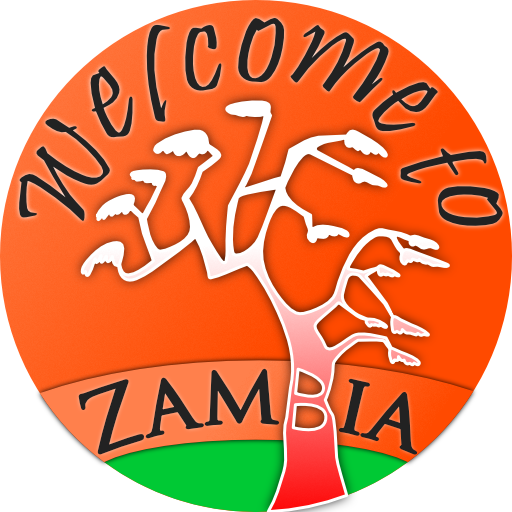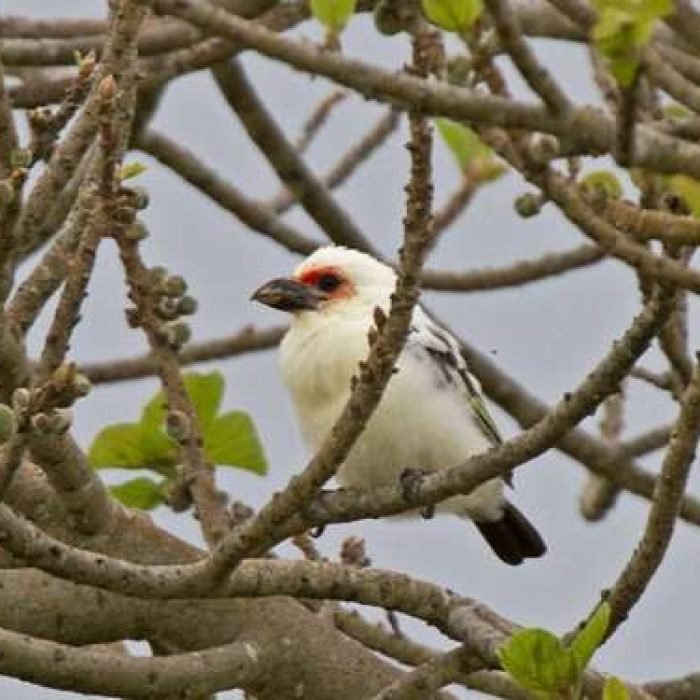Zambian Barbet
( Chaplin's barbet )
- Lybius chaplini
- IUCN Status: Vulnerable
- Trend: decreasing

- Phylum: Chordata
- Class: Aves
- Order: Piciformes
- Family: Lybiidae
- Genus: Lybius
Share:
General Information
The Zambian barbet is a small bird species endemic to Zambia.
Fun Facts!
The species was renamed to emphasize its status as Zambia’s only true endemic bird species and it earned a spot on the K1 (One Kwacha) coin.
Description
It is a small, plump-looking barbet with a large head and a heavy bill with bristles. Its plumage is white with red around the eyes. Its tail is black and the wings are black with yellow on the edges.
- Weight: 64–75
Ecology and Behaviour
The Zambian barbet’s usually occur in groups of two to six individuals and guard their territories aggressively. When calling to each other, these barbets snap their bills loudly and emit a chorus of buzzy, grating notes like an accelerating noisy cackle.
Diet
Reproduction
The Zambian barbet’s breeding season is from August to November. They nest in cavities in branches of the fig trees and lay between two and four eggs that they incubate for 13–15 days. The parents share the nesting and parental care responsibilities. These barbets can be parasitized by lesser honeyguides, which lay eggs in the barbets’ nest and leave them for the barbets to raise as their own. Sometimes the honey-guides will destroy some of the barbet chicks and replace them with the parasite offspring.
Conservation
It is categorized by the International Union for Conservation of Nature (IUCN) red list as, “Vulnerable”. It was formerly classified as a Near Threatened species by the IUCN. But new research has shown it to be rarer than it was believed. Consequently, it is up-listed to Vulnerable status in 2008.
Distribution and Habitat
The Zambian barbet is endemic to South Central Zambia and is restricted to the area between the Upper Kafue River to Kabanga in the Kalomo District. Its natural habitats are moist savanna and arable land.
Interaction with humans
It is threatened by habitat loss.








